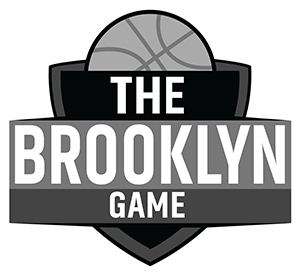
It is about time we start concentrating on the draft, I wanted to get to all of this stuff a lot sooner, but with the whole Lawrence Frank saga, this stuff took a back seat.
The Draft Lottery. It is an interesting and widely known concept, but many people are still confused about how it works. For example, only the first three picks are determined by the lottery, the other 11 are based on record. So for the Nets, we have 7 possibilites:
- The 1st pick – we get this pick by winning the draft lottery.
- The 2nd pick – we get this pick by coming in second in the draft lottery.
- The 3rd pick – we get this pick by coming in third in the draft lottery.
- The 11th pick – we get this pick if the top 3 teams based on percentage get the top 3 picks.
- The 12th pick – we get this pick if 1 of the top 3 teams based on percentage don’t make the top 3 and one of the teams behind us get in.*
- The 13th pick – we get this pick if 2 of the top 3 teams based on percentage don’t make the top 3 and two of the teams behind us get in.*
- The 14th pick – we get this pick if 3 of the top 3 teams based on percentage don’t make the top 3 and all three of the teams behind us get in.*
So how are the top three picks determined? Well, to determine the winner, fourteen ping pong balls numbered 1–14 are placed in a standard lottery machine and four balls are randomly selected from the lot. Just as in most traditional lotteries, the order in which the numbers are drawn is not important. That is, 1-2-3-4 is considered to be the same as 4-3-2-1. So although there is a total of 24 orders in which the balls numbered 1-2-3-4 can be picked, they are all treated as the same outcome. In doing this, the permutation of 4 balls from 14 becomes the combination of 4 balls from 14. That is, the total of 24,024 (14! / 10!, or 14x13x12x11) possible permutations is reduced by a factor of 24, to 1,001 combinations. Of these, 1 outcome is disregarded and 1,000 outcomes are distributed among the 14 non-playoff NBA teams. The combination 11-12-13-14 (in any order that those numbers are drawn) is not assigned and it is ignored if drawn; this has never occurred in practice. Here are the number of combinations each team gets:
- 250 combinations, 25.0% chance of receiving the #1 pick
- 199 combinations, 19.9% chance
- 156 combinations, 15.6% chance
- 119 combinations, 11.9% chance
- 88 combinations, 8.8% chance
- 63 combinations, 6.3% chance
- 43 combinations, 4.3% chance
- 28 combinations, 2.8% chance
- 17 combinations, 1.7% chance
- 11 combinations, 1.1% chance
- 8 combinations, 0.8% chance
- 7 combinations, 0.7% chance
- 6 combinations, 0.6% chance
- 5 combinations, 0.5% chance
Here are the odds for each seed to get specific picks if there were no ties:

So we got a 2.9% chance to get a top three pick. I like those odds…
*Thanks to newark hawk who made this little correction in the comments!


















